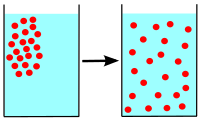
Photo from wikipedia
Abstract An experimental campaign on a bluff body of rectangular cross section, having a side-length ratio of 5:1 was carried out using both particle image velocimetry and hot wire anemometry… Click to show full abstract
Abstract An experimental campaign on a bluff body of rectangular cross section, having a side-length ratio of 5:1 was carried out using both particle image velocimetry and hot wire anemometry at a Reynolds number of 3.04 × 10 4 . Results show that under a slight angle of attack, the development of unsteadiness in the form of turbulent kinetic energy is significantly amplified on the pressure side of the body. A series of linear corrections fail to fully collapse the behavior of the curved shear onto the growth rates of the canonical planar mixing layer solution as expected. In pursuit of providing a physical mechanism to a non-linear contribution to shear layer transition, inspection of relevant components of the Karman-Howarth-Monin-Hill equation suggest a re-orientation of energy in scale-space, resulting in a combined forward and reverse energy transfer. It is shown that this reorganization process and energy transfer depend on the orientation of energetic structures within the shear layer.
Journal Title: International Journal of Heat and Fluid Flow
Year Published: 2021
Link to full text (if available)
Share on Social Media: Sign Up to like & get
recommendations!